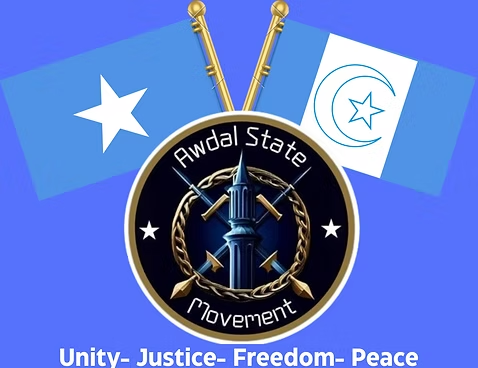Introduction
The union of British Somaliland and the Trust Territory of Somaliland in 1960 was a defining constitutional moment whose signatories, elders and political delegates such as Mohamed Haji Ibrahim Egal, Ahmed Haji Duale, Haji Ibrahim Nour, and Ali Garad Jama all from Gadaboursi, Harti, and Isaaq, established the basis for territorial identity across the northern regions. Attempts today to reassign coastal districts such as Sayla (Saylac) and Lughaya to an external family ( Ismael Omar Guelleh family) or political clique, wrapped in rhetoric of nationalism, cannot override the historical record or customary settlement patterns without clear documentary proof.
If, what they claim is true, why Ismael Omar Guelleh family not amongst the signatories?
1960: What the record shows
- Timeline and legal act: British Somaliland gained independence on 26 June 1960; the Trust Territory (former Italian Somaliland) became independent on 1 July 1960, and on that day the two territories united to form the Somali Republic. Those dates and the unification are recorded in UN records and standard historical references. (See United Nations historical summaries; Encyclopaedia Britannica, “Somalia, Independence and modern history.”)
- Delegates and representation: The processes of 1960 relied heavily on local parties, elders and district representatives in both former colonies. In the north, political actors and elders from the 3 main clan confederations acted as recognized delegates in the lead-up to and aftermath of union. (See I.M. Lewis, A Pastoral Democracy; colonial administrative records.)
- Sources: British Colonial Office records; contemporary press from 1960; academic histories of Somali state formation (I.M. Lewis is a standard reference).
Who historically occupied the north
- Clan geography: Ethnographic and historical scholarship consistently locate three principal clan families as primary actors across the northern districts: the Isaaq concentrated in much of Woqooyi Galbeed/Marodi Jeh and parts of Togdheer and Sanaag; the Gadabursi (often associated with Awdal and the littoral including Sayla, Lughaya and Salal); and Harti (a Darod confederation present in Sool, eastern Sanaag and adjacent areas). These distributions appear in colonial maps, ethnographies and later academic studies. (See I.M. Lewis; Encyclopaedia Britannica; regional ethnographic surveys.)
- Administrative practice: Under both colonial administration and early post-colonial governance, customary leaders and administrative officials recognized long-standing settlement and authority patterns, a practical recognition of who controlled what on the ground.
Sayla and Lughaya: historical ties and the burden of proof
- Local history: Sayla and Lughaya are historically oriented toward the Awdal littoral and are documented in colonial administrative maps and multiple ethnographic accounts as areas with strong local clan ties. Oral histories, local customary records and administrative practice have for generations recognized those ties. (See colonial administrative maps and regional ethnographies.)
- Contemporary claims: When contemporary actors assert ownership or control of these districts on the basis of nationalism or political alignment, such claims must be supported by documentary evidence: recognized administrative boundary redefinitions, legal land titles, treaties, or parliamentary acts recorded in authoritative archives. Absent such evidence, rhetoric cannot erase customary tenure or historical occupancy.
- Principle: Territorial claims require verifiable legal or documentary change. Appeals to abstract nationalism do not substitute for records, nor do they substitute for neutral adjudication.
On allegations of political manipulation and undue influence
- Extraordinary claims require extraordinary evidence: Allegations that a prominent external political family or political clique was granted parliamentary seats, administrative authority or land rights without legal basis are serious. Such claims should be approached as contested until established by primary documents (parliamentary rolls, official decrees, land registries) or credible investigative reporting. Public records of parliamentary composition and official acts are the proper places to verify such allegations.
- Sources to check: Somali parliamentary archives; United Nations and African Union mission reports; investigative journalism outlets; colonial and post-colonial administrative records.
Why historical accuracy and evidence matter
- Stability and rule of law: In a region where land and authority are closely tied to clan identity and customary practice, rewriting the past or asserting territorial transfers without transparent evidence fuels tensions and undermines both local stability and the rule of law. Independent archival verification prevents escalation and lends legitimacy to any lawful transfers or administrative control.
Selected references and sources to consult:
- United Nations historical summaries on Somaliland independence (1960).
- Encyclopaedia Britannica, “Somalia, Independence and modern history.”
- I.M. Lewis, A Pastoral Democracy: A Study of Pastoralism and Politics among the Northern Somali of the Horn of Africa (University of Chicago Press).
- British Colonial Office records and colonial administrative maps (archives).
- Academic journals and regional ethnographic surveys documenting clan distributions in northern Somalia.
Conclusion
The 1960 union and subsequent administrative practice established a documented baseline of representation and territorial reality across the north. Claims that attempt to transfer historic districts such as Sayla and Lughaya to Ismael Omar Guelleh family or clique, without providing rigorous documentary proof, are not only historically dubious, they are dangerous. Upholding history, the rule of law and transparent evidence is the only responsible path to resolving contested claims.
By: BURAALE XINIIN
